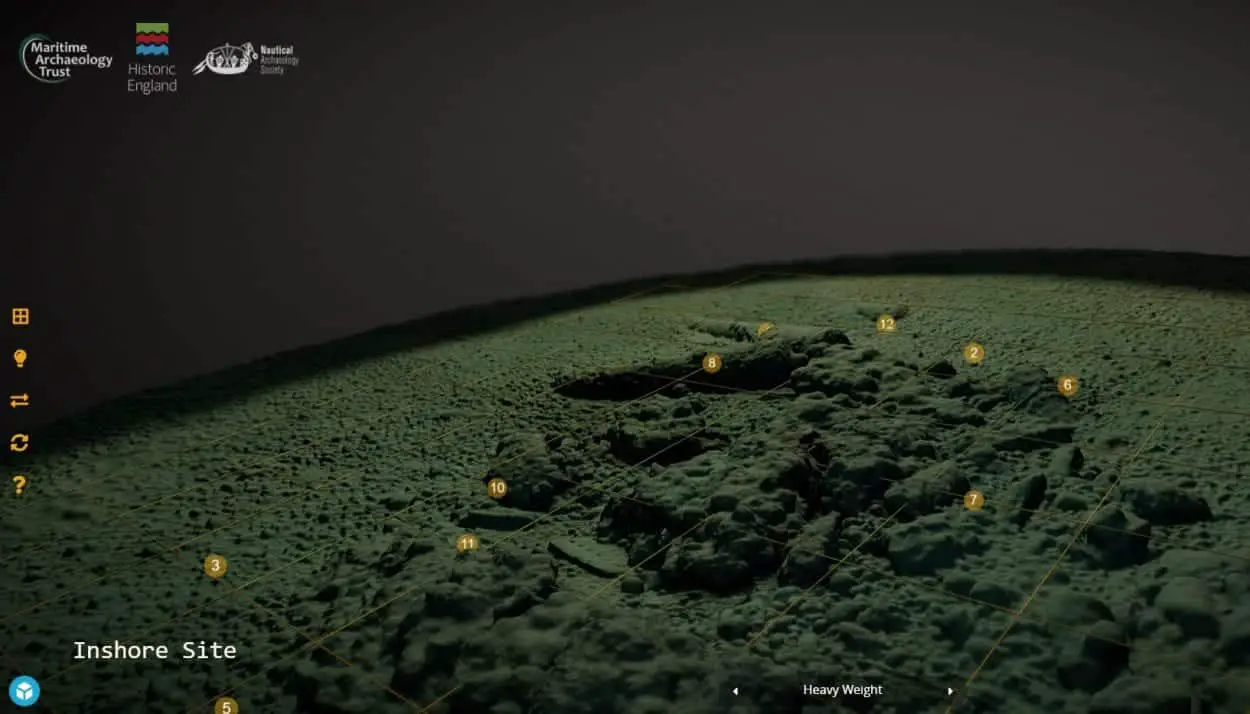Hidden just off Chesil Beach, Weymouth, Dorset, lie two wreck sites which, although they have been the focus of investigations for over 10 years, their identity remains a mystery.
With funding from Historic England, in 2019-2020 the Nautical Archaeology Society and Maritime Archaeology Trust worked together to undertake new surveys of the sites and to showcase them in the digital world using an online dive trail.
The Chesil Beach Cannon Site lies in two separate areas spaced 300 metres apart. The inshore site is thought to date from the late 17th or early 18th Century and includes the remains of eight cannons, iron shot and wooden elements. The offshore site has seven cannons, with little other artefact material visible and may be 17th century in date.
In 2019 and 2020 local divers were invited to take part in the week-long project; attending a series of free training sessions to prepare them for their archaeological fieldwork. Using underwater surveying techniques and 3D photogrammetry, the newly trained divers formed a local team who it is hoped will continue to investigate and protect the wrecks in the future.
As the wrecks lie underwater off Chesil Beach, it has been difficult for the general public to access this local heritage so far. However, with the surge in 3D technologies over recent years, the MAT and NAS have now brought the wrecks and their secrets to the surface through an online dive trail.
Brandon Mason, maritime archaeologist with the Maritime Archaeology Trust who developed the 3D dive trail says “The 3D recording techniques we have used can bring people up close and personal with underwater cultural heritage like never before. Working with the NAS we will continue to build a dedicated team of local divers to look after these important sites. As well as working with divers we can now take the local and wider community along for the ride in virtual reality, greatly enhancing the value of the Chesil Beach Cannon Site for as many people as possible”.
“This project would not have been possible without the fantastic support provided through grant funding from Historic England and working with our partner the NAS” says Brandon.
Hefin Meara, maritime archaeologist at Historic England says “We’re delighted to be able to share the virtual tour of this fascinating wreck site. Cutting edge technology has brought the wreck to life, ensuring that underwater archaeology is accessible to all. We’re looking forward to working closely with the local divers in future, as their ongoing monitoring and investigation is essential to understanding the protected wreck.”
Now anyone can explore the wrecks from the comfort of their own home, without the need of a dry suit and dive kit. Visit the Chesil Beach Cannon Site here:
https://chesil.maritimearchaeologytrust.org





